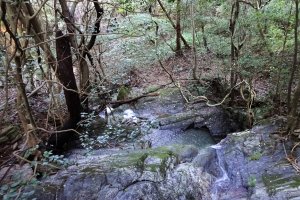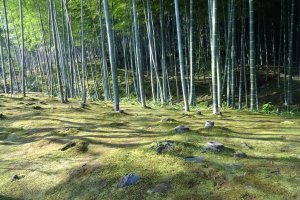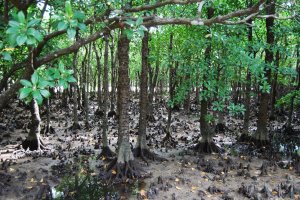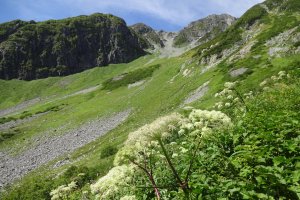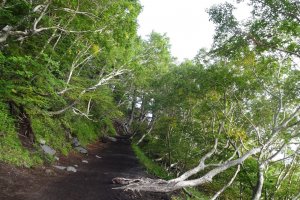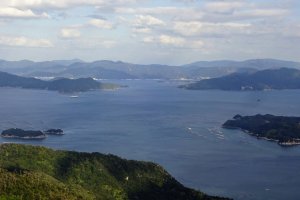Japan’s best kept secret is not found in the backstreets of Tokyo, in the shopping malls of Osaka and in the alleys of Kyoto. It is not found in the intricate presentation of traditional handicrafts nor in its centuries-old ways. It does not usually cost money to get access and it is never too far away (most of the time). In fact, it is right under our nose; it is obvious, spacious, and it is green.
The answer to the riddle becomes clear when you fly over Japan. Mountains and forests cover most parts of the land. Yet, most of us don’t really take in what treasure there lies right in front of our eyes.
Hence, let’s get the statistics: about 70% of land in Japan is covered by forest!


Forests all around, a LOT!
Japan is one of the most forested countries in the world in terms of forest-land ratio (forest area in relation to land area). It ranks only second after Finland where the forest land ratio is with almost 74% the highest in the world. Japan is followed by Sweden with 67% and South Korea with 64%. Brazil comes close to 60%. Countries such as Germany, Switzerland, the USA and Canada hoover at 30% to 35%. Some other countries have a much poorer record, such as China with 22%, Australia with 17% and Great Britain with just 13%!
Reasons for a low ratio include the characteristics of the natural environment but also deforestation and industrialization. Let this be as it may, fact is that Japan has something to offer that many other countries do not have, or not have anymore – lush green forest with a great biodiversity.
Let the fact sink in: two third of Japan’s land area is covered by forest!
This amazing fact remains unknown to those visitors who prefer to stay in the Kanto and Kansai metropolitan areas. Travelling by Shikansen (Bullet Train) between Tokyo and Kyoto/Osaka, while convenient and fast, will also leave you in the dark about Japan’s best kept secret: its forest.


A Great Variety of Forests
Japan’s forests range from the country’s most northeastern corner on Hokkaido Island to its farthest southwestern islands in Okinawa.
Over a distance of 3,000 km you can find several types of forest.
- Coniferous forest in northern and eastern Hokkaido and in alpine areas.
- Cool-temperate deciduous forests in southern Hokkaido and in northern and central Honshu.
- Sub-alpine forests in Honshu’s alpine mountains.
- Broadleaf evergreen forests in Western Honshu and in Shikoku and Kyushu.
- Subtropical rain forest in the Okinawan Islands and the Amami-Oshima Islands.
- Mangrove forests in Okinawa and on islands south of Kyushu.


Industrial Forest versus Natural Forests
Half of all forests in Japan (except for a small percentage of bamboo forests) are artificial forests, also called industrial forests. They were planted by humans for the purpose of logging. These forest plantations consist mainly of coniferous trees such as cedar, Japanese cypress and Japanese larch.
Ironically, most of these cedar and cypress forests are now greatly enjoyed by people, both Japanese and foreigners. Actually, many people think of cedar and cypress forests as a typical Japanese forest, not counting bamboo forests like the famous one in Kyoto Arashiyama.
The remaining half, however, are natural forest, including old-growth forest and forest that was cut but then left to naturally grow again. Broadleaf trees make up the majority of these forests.


The Most Precious: Virgin Forests
Large areas of old-growth forest, including virgin forest (forest that was never touched by human hands), are to be found in:
- Shiretoko National Park in Hokkaido.
- Shirakami Sanchi in Akita Prefecture.
- Kasugayama Primeval Forest in Nara Prefecture.
- Yakushima Forest in Kagoshima Prefecture.


Finding your Balance in the Forest
Spending time in nature might not rank high on your list of places to visit in Japan. Yet, there are ways how you can incorporate walks in the forest in your busy travel plans.
For example, walking along the Kumano Kodo, a network of ancient pilgrimage trails on the Kii Peninsula of Japan. Large parts of the trail lead through forest, including cedar and cypress plantations as well as natural forest. Some parts of the trail are located in the Yoshino-Kumano National Park which was designated in 1936. What’s more, part of the area was designated a UNESCO World Heritage site in 2004 under the name of “Sacred Sites and Pilgrimage Routes in the Kii Mountain Range”.
Here the trails of nature, spirituality, culture and history cross, an enticing combination not to be missed!



